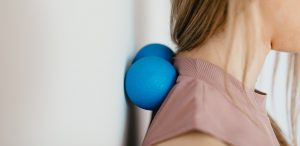Cupping therapy – it’s been around for centuries, tracing its roots back to ancient civilizations. These days, it’s popping up on social media feeds and wellness blogs, often touted as a secret weapon for shedding those stubborn pounds. Who hasn’t stared in the mirror, frustrated by that little bit of extra jiggle that just won’t budge?
Could cupping therapy be the answer to our slimming woes? It sounds intriguing, right?
The idea of these little cups working their magic to sculpt your body into the figure of your dreams is undeniably appealing. This post will strip away the hype and explore the reality of cupping therapy for weight loss. It’ll examine the potential benefits, the science (or lack thereof), and what you can realistically expect if you decide to give it a try. Read on.
Understanding Cupping Therapy
So, what exactly is cupping massage or cupping therapy? Imagine little cups, usually made of glass or silicone, creating suction on your skin. It’s not as scary as it might sound. In fact, many people find it quite relaxing, similar to a deep tissue massage. There are a few different types of cupping therapy:
Dry cupping
This is the most common type. The therapist simply places the cups on your skin and creates suction using a pump or by heating the air inside the cup.
Wet cupping
This involves a slightly different approach. The therapist might make small pricks in your skin before applying the cups, allowing a small amount of blood to be drawn out.
Fire cupping
This traditional method involves briefly igniting a flammable substance inside the cup to create a vacuum before placing it on your skin.

Just like any other wellness practice, it’s essential to consult with a qualified practitioner to determine if cupping is right for you.
1. Mechanisms of Cupping Therapy for Slimming
The key lies in that suction mentioned earlier. When those cups are placed on your skin, they create a vacuum that pulls your skin and underlying tissues upwards. This action is believed to have a few different effects:
Increased blood flow
The suction encourages blood to rush to the treated area, bringing with it oxygen and nutrients essential for healthy tissue function. Increased blood flow may also help break down fatty deposits and improve overall circulation.
Lymphatic drainage
Cupping is thought to stimulate lymphatic drainage, helping to flush out toxins that may be contributing to weight gain or bloating.
Metabolic boost
Some practitioners believe that cupping may also help your metabolism. By improving circulation and lymphatic flow, cupping may help your body burn calories more efficiently.
Connective tissue release
The suction from cupping may also help to release fascial adhesions, those tight spots in your connective tissue that can restrict movement and contribute to pain. By loosening these restrictions, cupping may help to improve overall body function and support weight loss efforts.
While these mechanisms sound promising, there’s still limited scientific evidence to definitively prove that cupping directly causes weight loss.
2. What the Research Says (or Doesn’t Say)
While there are some promising studies and plenty of anecdotal evidence from people who swear by cupping for slimming down, scientific research on this topic is still limited. There haven’t been enough large-scale, well-designed studies to definitively prove that cupping alone can cause substantial weight loss.
Some small studies have shown positive results, with participants reporting reductions in body measurements and weight after cupping therapy sessions. However, these studies often lack control groups, making it difficult to draw concrete conclusions. It’s important to be realistic and manage expectations. Cupping therapy may not be the miracle cure for shedding pounds, but it could potentially be a helpful tool when combined with a healthy lifestyle.
3. What to Expect During a Cupping Session
What actually happens during a cupping session? Let’s break it down into simple steps:
- Consultation: First, you’ll chat with the practitioner about your health history and goals.
- Positioning: Next, you’ll lie down on a massage table, either face up or face down, depending on the areas you want to focus on.
- Warming the cups: The practitioner will then warm the cups, often using a flame or a heat gun.
- Applying the cups: They will place the warmed cups on your skin. You’ll feel a gentle pulling sensation as the vacuum forms, drawing your skin and underlying tissue upwards. It’s usually not painful, but more like a firm, soothing pressure.
- Relaxation: The cups are typically left on for 5-15 minutes, depending on the type of cupping and your preferences.
- Removing the cups: After the allotted time, the practitioner will gently remove the cups. You might notice some circular marks on your skin, but these are temporary and usually fade within a few days.
- Aftercare: The practitioner may apply some lotion or oil to soothe your skin.
Now that you have a better idea of what to expect, you can decide whether to incorporate this ancient therapy into your wellness routine.
4. Potential Benefits Beyond Weight Loss
Even if you don’t see a drastic change on the scale, you might notice some positive shifts in other areas of your well-being. Here are a few of the potential perks you might experience after a cupping session:
Pain relief
The suction and increased blood flow can help to relax tense muscles and reduce inflammation, offering relief from conditions like back pain, neck pain, and headaches.
Improved skin appearance
The increased circulation and lymphatic drainage can help to smooth out dimpled skin and give you a healthy glow.
Stress reduction
The warmth and gentle pressure of the cups can help to melt away tension and promote relaxation, leaving you feeling refreshed and rejuvenated.
Better athletic performance
Improved blood flow and muscle relaxation can help reduce muscle soreness, increase flexibility, and even boost energy levels.
These are just potential benefits, and everyone’s experience with cupping will be different. The key is to approach cupping with an open mind.
5. Important Considerations and Precautions
Cupping isn’t for everyone. It’s best to avoid it if you’re pregnant, have a bleeding disorder, or are taking blood thinners. People with certain skin conditions or infections should also avoid it. It’s also crucial to find a qualified practitioner with experience in cupping therapy. Don’t be afraid to ask about their training and certifications. A reputable practitioner will take the time to explain the procedure, discuss any potential risks, and answer any questions you have.
There can be some side effects. The most common one is bruising. These bruises usually fade within a few days to a week, but they can be unsightly, so it’s something to consider if you have an upcoming event or vacation.
Finally, it’s important to remember that cupping therapy isn’t a magic bullet for weight loss. It can be a helpful tool when combined with a healthy lifestyle, but it’s not a substitute for a balanced diet and regular exercise.
Final Thoughts
So, is cupping therapy the ultimate weight loss secret? While the science isn’t definitive, the potential benefits extend far beyond mere numbers on a scale. If you’re intrigued by the idea of harnessing this ancient practice for a healthier, more vibrant you, why not take the next step? Remember, the path to a healthier body isn’t always a straight line. Embrace the possibilities, explore new approaches, and listen to what your body needs.








